In search of the charms that surround abandoned places
IN THE bustling city of Seoul, old areas are sadly neglected. Unused spaces quickly turn into lucrative commercial areas—old buildings are torn down, soon to be replaced by skyscrapers and fancy apartments. Regarded unsightly and obsolete, there is no more space left for buildings that have lost their function. Hence, the aesthetics of ruins lie in their own history and unique aura—providing exclusive scenery hardly found in impeccably manicured urban facilities. In search of the hidden charms of abandoned places, The Yonsei Annals visited Yongma Land and Hwarangdae Station located in the northeastern part of Seoul.
Yongma Land
Unlit welcome signs and rusty gates greet visitors of Yongma Land, an abandoned amusement park located in Jungnang-gu, Seoul. Opened in 1983, Yongma Land was quite popular with locals until it was officially closed in 2011 due to continued financial difficulties, exacerbated by the International Monetary Fund (IMF) crisis in Korea[1]. Though all the rides have ceased operations, Yongma Land has become a newly trending location for its retro scenery. The deserted amusement park is visited by those who wish to revisit memories of their youth, fans of occult genres, and tourists. It is a sought-after set location for K-pop music videos, having been used by IU for her second album’s photo shoot. Horror movies, including The Target (2014), were also filmed in Yongma Land, for its strange allure[1].

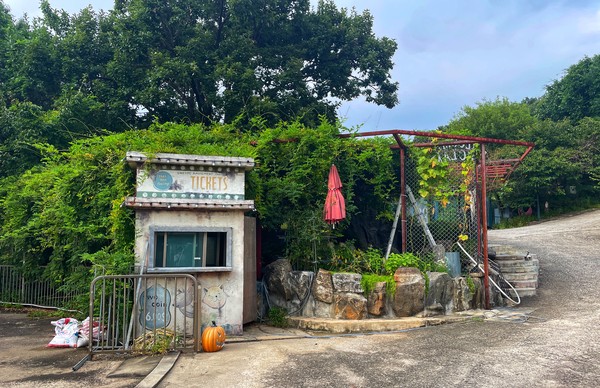


When visitors disembark from the bus at the entrance, they are met with an unpaved road with bushy trees decorating the sides leading all the way to Yongma Land. Upon entering the park, one will get to see the most iconic structure of Yongma Land, which is the rusty merry-go-round. Portions of the colorful paint on the horses have peeled off, giving the horses’ eyes a sense of emptiness. The absence of children’s laughter and joyful melodies—both natural in typical amusement parks—add to the gloomy atmosphere of the place. Neglected sculptures and decaying adornments were covered with several layers of foliage and tree branches. Some of the amusement rides reflect the phases of the 1980s, such as the children’s ride in the shape of green taxis that were common in the past. Decorative phone booths, which have mostly disappeared from today’s Korean streets, can also be found at the corner of the park. The abandoned amusement rides of Yongma Land create a cartoonish yet eerie setting, attracting explorers who are craving a little risky experience outside the city.
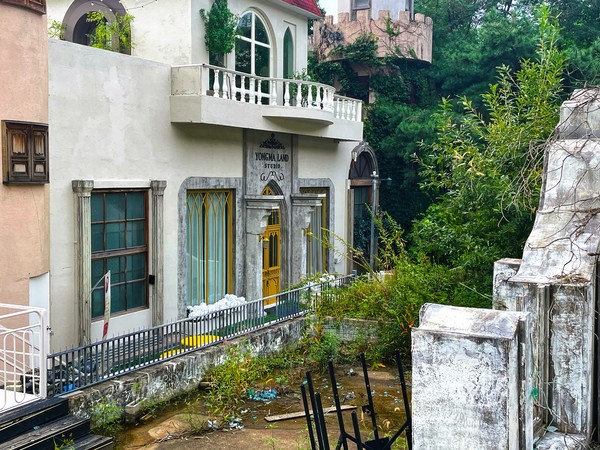
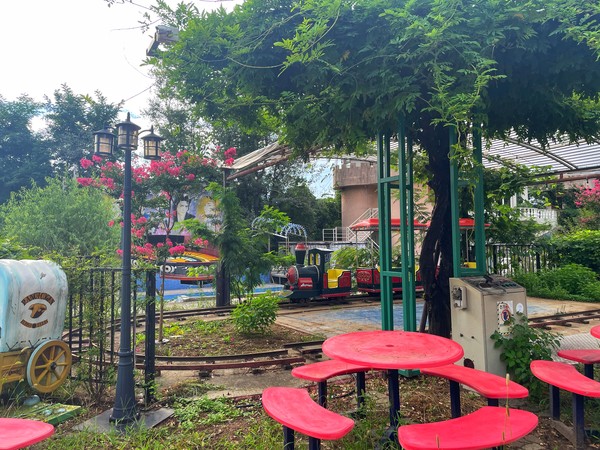

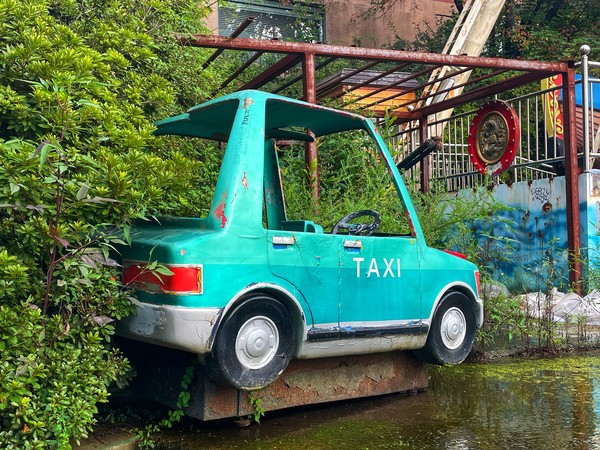
Hwarangdae station
Located right next to Korea Military Academy, Hwarangdae station is a former railway station on Gyeongchun Line—a railway connecting Seoul and Gangwon-do. Hwarangdae station used to be called Taereung station, until it was renamed in 1958. Hwarangdae station closed in 2010 following track changes on the Gyeongchun Line. Parts of the station are now preserved in the Hwarangdae Station Railroad Museum and are registered as cultural heritage property[2]. It is also connected to Gyeongchun Line Forest Park, a 5.4 km trail following the old railways. The site offers picturesque scenery, especially with the green vegetation covering the rusted rails.
Upon entering the abandoned station, visitors can feel as if they have traveled to the past, starting from the long, old trailways that seemed unending. Grass flowers make their way out of the pebbles covering the trails. Trains from different eras are displayed on the rails, letting visitors take a look at the interiors and facilities of the trains from back then. The seat covers are worn out from extended use, preserving the memories of passengers who took the train decades ago. In the narrow hallway between the seats are chips of gray paint fallen from the ceiling, proving its long history. Through the windows of the train figure, a former ticketing area that featured vintage vibes with decorations of red bricks can be seen. The one-story yellow building has safeguarded the platforms and wooden chairs of the past. The rusted, fading green signboard hangs under the building roof, seeming to mark the sign of the times. Trains have now been taken over by high-speed modes of transportation; yet the indelicateness of this old train station evokes old, warm memories of railway journeys.
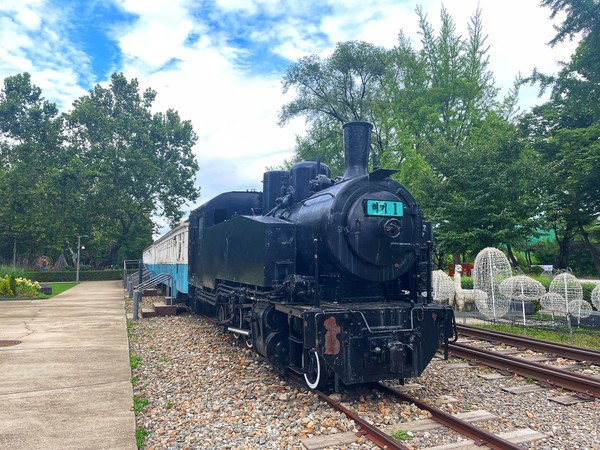

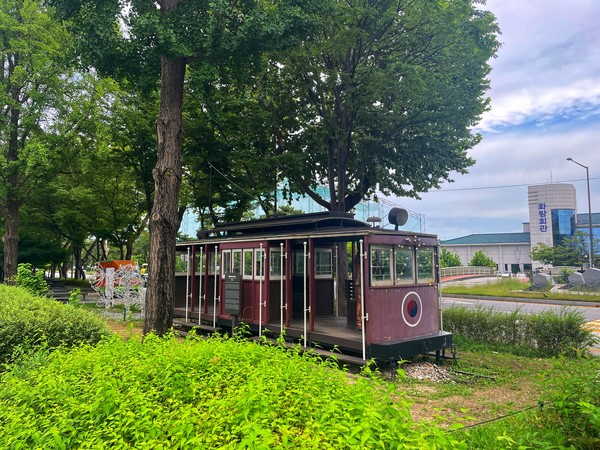
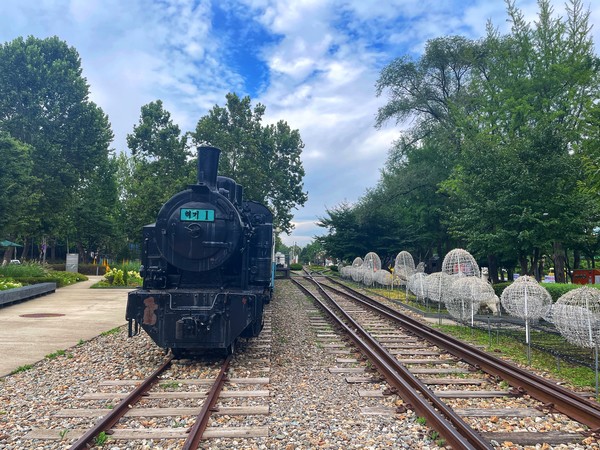
* * *
The retro, classic characteristics of abandoned places are unrivaled, as they are barely observed in the city. Still, in the outskirts of Seoul, there are old, deserted locations with special charms that are worth visiting. Yongma Land and Hwarangdae station both cherish their vintage heritages of abandoned sites.
[1] Sports DongA
[2] Cultural Heritage Administration

